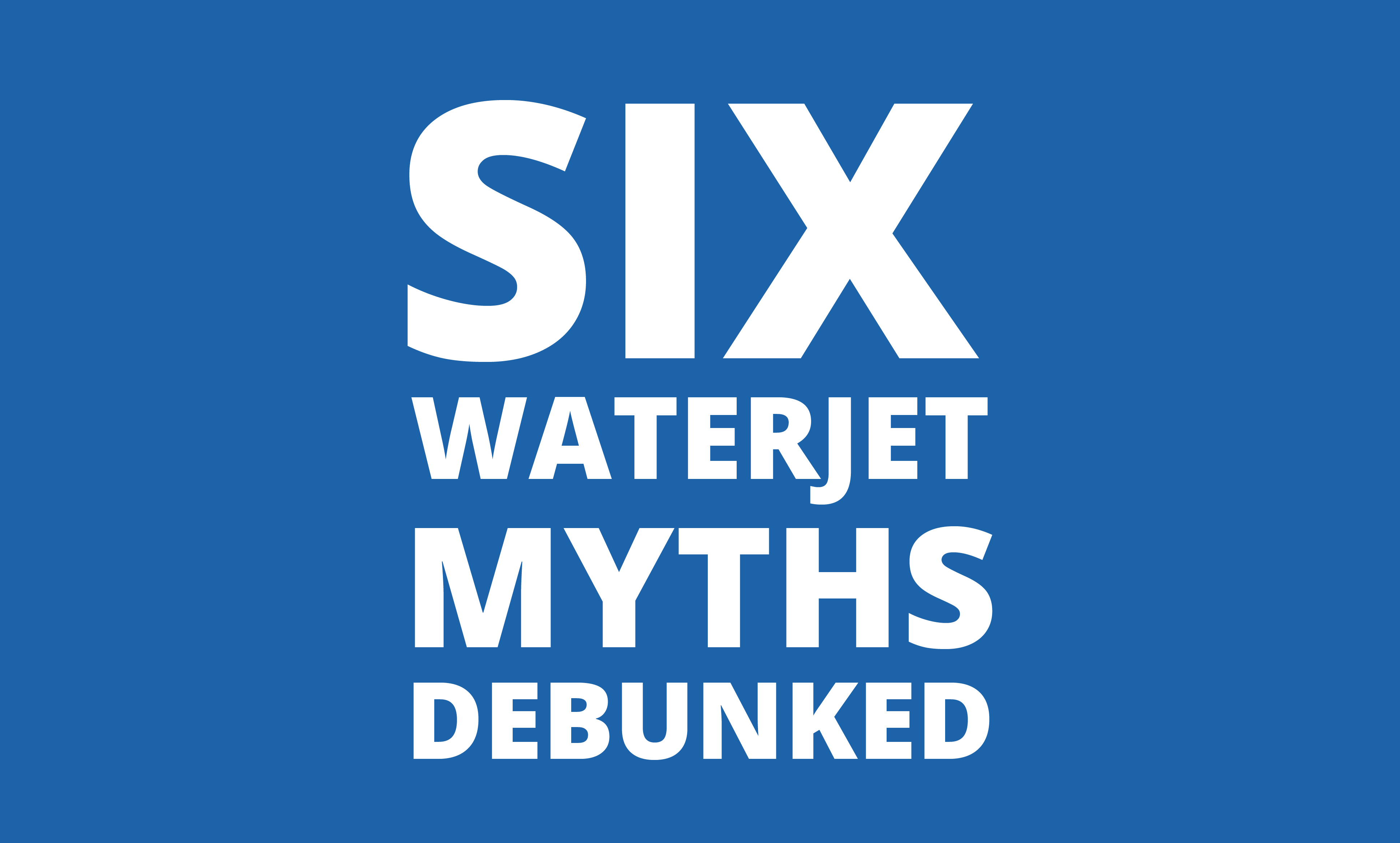

6 Waterjet Myths Debunked
Unicorns? No way. Waterjet cutting? Definitely.
Waterjet cutting is becoming one of the most common and sought after cutting techniques for many industries because of the variety of benefits and uses it provides. More and more people are learning about the advantages of using waterjets for cutting materials like metals, plastics, foams, and everything in between, but there are still a lot of myths floating around about waterjets. At Cutting Experts, we hear a lot of them. We wanted to debunk the six most common myths we hear.
1. Waterjets are for “rough cutting” and are not accurate enough for finished parts
With all the advances being made with waterjet technology this just isn’t true. With a proper set-up, modern waterjets are capable of tight tolerances of .005″ in materials up to 1″ thick, and even .001” tolerance is possible with some materials. That’s some accurate cutting! Our waterjets are backed-up by CNC programs that make them extremely precise and accurate.
2. Waterjets are best used for tile and metal cutting
This is a myth that we have to debunk often. Many people are under the impression that waterjets are limited to certain materials when, in fact, waterjets can cut a wide range of materials. Our waterjets are configured to cut thin fragile plastics, laminations, rubber materials, composites, fiberglass, ceramics, foam, carbon fiber, and many other difficult to cut materials. That’s the beauty of waterjets, they can cut virtually any material.
3. Waterjet cutting is much more expensive than laser cutting
When materials are more than 1/4″ thick, waterjet cutting costs are usually less than laser cutting. Even with thinner materials, secondary processing of laser cut parts often makes overall costs comparable with waterjet cut parts. Waterjets do not require secondary processing in many applications, which can save you a lot of time and money. They also save raw materials due to nesting capabilities, and small cutting kerf width.
4. Waterjets leave rough striation marks on the edges of parts
Striation marks are a result of the selected run-speed of the machine and can be reduced or eliminated in most cases. We work with the customer during the quote process to determine what type of finish is required. In cases where the product’s edge finish isn’t a factor, we will run the machine faster for a lower cost. Where the product’s edge finish is important, we will make adjustments to the process to provide the desired edge finish. We also offer sample edge finishes of the actual material to be used if clients are unsure of what kind of edge they will require or would like to see for themselves.
5. Materials that absorb water shouldn’t be cut with a waterjet
“You can’t cut that with water!” Yes, we can! Many materials you would typically think shouldn’t be wet can be cut by a waterjet because there is little water transfer to the actual material. We commonly use tiny .005 nozzles to cut materials like foams or other types of insulation that don’t need to get wet. The cut parts are completely dry in minutes, and no damage occurs.
6. My project can’t be quoted or priced because I don’t have a proper drawing and I don’t know what questions to ask.
Just contact us. We can talk through your cutting job from your beginning concept and develop drawings for you if need. We will ask a few basic questions and help you navigate the quoting and cutting process.
Was your myth debunked? Contact our experts to ask questions or request a quote

